We who practice the Okinawan martial arts in the West today owe a debt to those who pioneered this practice here. Primarily American servicemen during the occupation of Okinawa after WWII, these men brought what was then a small scale set of local martial practices to a much larger public. Either as their direct students or in a more general way as beneficiaries of the work they did to spread these arts, without their hard work few if any of us would have had the chance to do what we do.
Among these men is Kimo Wall sensei. In general he has maintained a fairly low profile over the years. He has had no stories about him in Black Belt, has published no books or videos, and barely has a web presence. He has led a somewhat nomadic life, moving around to stay in contact with his students and share his art. He has never been much for advertising and he does little to promote membership in his Kodokan (and does not even charge membership dues). He feels that the training should speak for itself and if people want to train they can come train, without the need for advertising. Recently Kimo sensei has engaged more with social media and I have noticed that this has not been accompanied by much accurate information about him. That is too bad, as he is one of the most well-rounded, generous, and hard-working pioneers of the Okinawan martial arts in the US. To remedy that somewhat, I would like to share a little about him.
I will leave personal information to him but his training background is indeed unique. The child of a US serviceman he grew up primarily in Hawaii. He got an almost stereotypical start in the arts- he had asthma and a friend of the family suggest karate training as a way to help him get over it. In a less stereotypical way his training began in Kamuela, Hawaii, in 1949. His teachers were Sam and Walter Higa. The father, Sam, had immigrated to Hawaii with his family around 1939. Before that he had studied Goju Ryu under Miyagi Chojun and Higa Seiko. Kimo sensei studied with these teachers until he moved to Georgia and entered the Marine Corps in 1961. He has also mentioned that after 1959 he met and occasionally trained with Mitsugi Kobayashi, also a student of Higa Seiko’s.
Kimo sensei was first stationed to Okinawa in 1962. He was certainly not the first US Serviceman to enter an Okinawan dojo. However, he was the first to enter HIga Seiko’s dojo and was very likely the first to arrive on Okinawa with both a letter of introduction from a former student and over a decade of experience in the art. So, instead of starting his study of Goju Ryu he started a process of refinement and expansion of what he already knew. His training began under a teacher that had learned before Goju was fully formed (He relates that Sam Higa taught Naihanchi as part of his Goju Ryu, since it had been something Miyagi taught in the 20s and 30s.), giving him a valuable window on the development of the art as he continued learning from his first teacher’s teacher. He was accepted to Higa sensei’s dojo and continued to train there through his various postings on Okinawa, and on his frequent trips to the island after he left the service. Higa Seiko passed away in 1966 and after that he trained with the other seniors- Takamine, Higa Seikichi, Kiyuna, Gibo, and others.
At that time, the Okinawan karate community was not as factionalized as it is now. Kimo sensei tells stories of visiting many dojo, including those of Yagi sensei, Miyazato sensei, Masanobu Shinjo sensei, as well as non-Goju dojo, to train together, to do testing which at that time was often held at the Jundokan, to do demonstrations, and to socialize. He was introduced to the Shoreikan dojo in Koza in the 60s, when Toguchi sensei was primarily living in Tokyo. Kimo sensei first met his students Tamano and Shinoda, and got interested in the training subjects and two person application sets they demonstrated. He learned those subjects from Toguchi sensei’s students and first met Toguchi sensei in 1969. Higa sensei also introduced him to another student of Miyagi’s, Kina Seiko. He trained with Kina sensei both in the 60s and on his visits to the island later on, and found the insights into Goju he got from Kina very valuable and the friendship that developed a wonderful part of his life in Okinawa.
All told this forms a remarkable and unique experience of Goju Ryu, one quite different from most other members of his generation. Able to start his training on the island with a good deal of experience and a formal introduction from a respected source, as well as some understanding of the language and culture from his home dojo and childhood village, he became a part of the dojo in ways that few if any other foreigners at the time were able to. His training reflected this: soon after arriving he was accepted into the seniors class time, which was private and took place after the kids and lower level black belts finished their training in the evenings. Along with his exposure to other teachers and aspects of Goju Ryu, it formed a depth and breadth of knowledge few can espouse.
But his Goju training was only one aspect of his experience in Okinawa. While for most servicemen of his day karate was the main aspect of study, Kimo sensei also embarked on an intense study of Okinawan Kobudo. It started on his first day visiting Higa sensei’s dojo. He had just arrived on Okinawa and came to the dojo with his introduction letter. He was met by Matayoshi Shinpo, who was living at the dojo in those days. That turned out to be a very fortunate meeting, as Matayoshi sensei would become his kobudo teacher and in many ways his mentor in the Okinawan martial arts.
Kimo sensei relates that in those days Matayoshi sensei was still re-connecting to many friends and former students of his father. He had not been back in Okinawa long, and did not have a car. Kimo sensei did, and with his days often free he would train with Higa and Matayoshi sensei and at times drive Matayoshi sensei around to find and visit find friends and students of his father. Even on Okinawa in those days kobudo was not very popular. Matayoshi sensei was just starting to think about what would become his life’s work of developing kobudo on the island. The formal syllabus of the Zen Okinawa Kobudo Renmei, the development of things like the formal hojo undo (basic sets), and the founding of Matayoshi’s Kodokan dojo were all more than a decade away. The kata syllabus was slightly different (Kimo sensei relates sometimes doing 10 or 11 bo kata, for example), and the sequence of some other kata were still in flux. Matayoshi would sometimes focus on one weapon for weeks or a month at a time, and there were all sorts of applications he taught that were not contained in the kata. The tie between kata and application was very strong, and the applications were geared towards not allowing the opponent the opportunity to block or defend in any way, as opposed to blocking and attacking sequences. With his schedule his training was often one-on-one during the day, and it gave him a unusual window into the Matayoshi lineage kobudo at a period when it was developing and changing.
By the early 1970s he was already well versed in Matayoshi’s kobudo, something that few other foreigners had much experience with and something that was fairly rare on Okinawa as well. In addition to his training he developed a close bond with Matayoshi sensei. When he left the Marine Corps in the early 70s and founded his own dojo, he asked and was authorized by Matayoshi sensei to use the name Kodokan for his new organization. (For many years the characters he used to write the name were identical to the Kodokan of Matayoshi Shinpo. In later years he changed the first character, Ko, from Light (光) to Old (古), to represent his desire to preserve and pass on all the material he had been given from his various teachers.) On visits to the island Matayoshi sensei would help him find work and lodging, and he visited Kimo sensei in the US a couple of times, including a long trip around the country together in 1995.
The experience Kimo sensei had studying with Matayoshi sensei, and with Higa sensei, was in many ways a slice of Okinawan martial arts training that has mostly disappeared- often one on one training with a basis in kata and application, geared towards the individual student and their progression. Indeed, Kimo sensei has related that the changes that have taken place in both the karate and kobudo on Okinawa are sometimes subtle but as a whole have created a very different feeling in much of the practice: more formal, less organic, and sometimes more focused on form than application. Training in the 60s was also based in a strong and ongoing relationship between teacher and student, one not founded on an economic transaction like paying for instruction but in years of training together and getting to really know each other. Something that is hard to develop in short visits to the island, or with someone you have just met.
His relationships in the karate community on Okinawa also spread outside the dojo. He became friends with Mr. Nakasone, the owner of the well known Shureido karate and kobudo equipment store, when the business was just getting started. He relates how he encouraged Nakasone san to move away from a mix of sporting goods and focus on martial arts equipment, was there when Matayoshi and Nakasone met to discuss the size and shape of some of the weapons that would be part of the Shureido brand, and that he wrote the first English language ad for the business. (He was also given the original license to sell Shureido equipment in the US, something he passed on to Mr. Takushi a number of years later.) The two men are still friends, and I remember Nakasone san taking a good deal of time when we first met in 1990 to help me find a dojo near where I was living in Kagoshima, and to treat me to lunch, as a favor to a student of an old friend. These relationships have formed the backbone of Kimo sensei’s connection to the Okinawan martial arts, and are a unique window into the development of the Okinawan martial arts as they are today.
When he opened his first Kodokan dojo in Puerto Rico after leaving the service in 1971 Kimo sensei also began developing his own syllabus from what he had been taught. He created his own versions of the two man bunkai Toguchi developed for a few of the Shoreikan training kata, application sets that conformed more closely to the principles his teachers had instilled in him. He also began teaching kobudo. At that time kobudo instruction was fairly rare in the West, and skilled kobudo instructors even rarer. Of course by this time he was not the only Westerner to have trained in Matayoshi kobudo but he is certainly the only one who had learned the entire syllabus taught in his day, from bo to suruchin, 9’ bo, utsu or kudamon bo, and so on. Indeed, there are a limited number of people, Okinawan or Western, who can claim that today, never mind in 1970! To this day his kobudo reflects what he was taught in the 60s and 70s, before the development of the Zen Okinawa Kobudo Renmei and the formalization of some aspects of the system.

This flag, long a centerpiece of the Kodokan Dojo in Sobe, Naha, was made in Guatemala and was a gift from Kimo sensei.
From the founding of his first dojo Kimo sensei embarked on what has been a long road of teaching and spreading his karate and kobudo. As I have gotten to know people around the country who practice our arts, I am constantly surprised by how often his name comes up. He was the first exposure many people had to Kobudo, starting in the 70s. (And he may be the person responsible for the story of the sai originally being a tool for planting seeds- he says he made the story up in response to someone’s continuous questions at a seminar in the early 70s, and thought everyone there knew it was a joke!). He has influenced the training of generations of karate and kobudo ka in the US, and has run dojo in Puerto Rico, Guatemala, California, Tennessee, and at UMass Amherst, (where I first started training with him in 1986) among other places. While he has maintained a low profile, he has had a significant impact on the Okinawan martial arts community in the west. It is not something he talks about, but without him the history of Goju Ryu, and of Okinawan Kobudo, in the US would certainly have been different.
Over the years, Kimo sensei has maintained his ties to his teachers in Okinawa, visiting for extended periods and later bringing students with him. In 1986, 30 years ago, he was graded 7th dan by both the Shodokan and Matayoshi Shinpo sensei. At that time (and possibly still) the highest ranked foreign student ranked directly by Matayoshi, or the Shodokan. As his direct teachers have passed away, he has seen little need to press for added rank. Indeed, he suggested to Higa sensei and Matayoshi sensei in 1965 that foreign students never be allowed to rise beyond 5th dan in rank, though they should be taught the full depth of their systems. He still feels strongly that the Okinawan arts are a cultural artifact of the Okinawan people, and as such should be guided, guarded, and controlled by them. Time has seen other ideas prevail in so far as rank goes but he has always tried to teach his students the same respect for their teachers, and for the Okinawan culture, he has, and has maintained the ideal of practice and teaching over rank or acclaim. While this has not garnered him much in the way of wealth or fame it has enabled him to have a profound effect on the lives of many of his students, and to have profoundly affected the course of the practice of the Okinawan martial arts in the US.
Of course there is lots more that can be said about Kimo sensei. Perhaps another time. But while he does not go in for much self-promotion I do hope Kimo sensei will take some credit for the work he has done to promote the arts, and to teach his students. He deserves it, but I am not sure if he really wants it or not. Really, I think he just wants to keep training and teaching. As he said to me years ago: “I don’t want to be put up on a pedestal. There is no room to move up there, and I want to keep moving, and learning!”

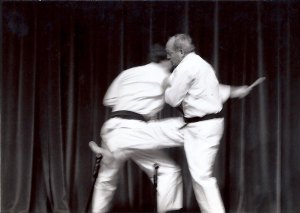
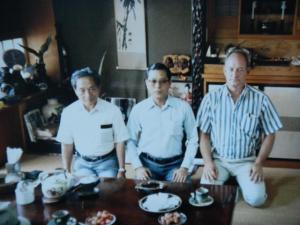
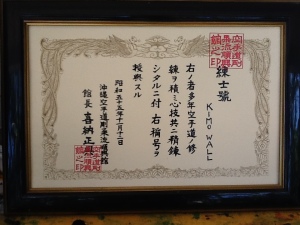
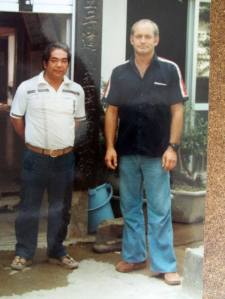
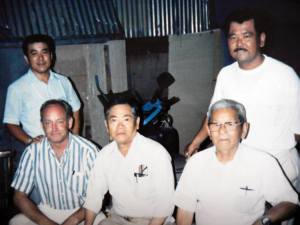
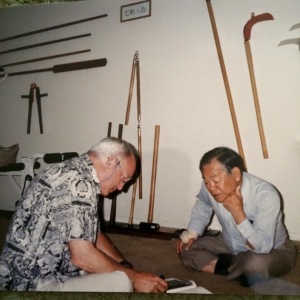
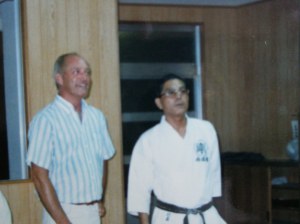
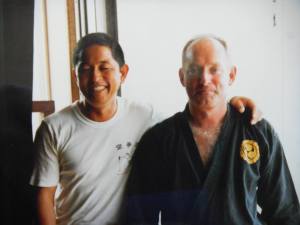
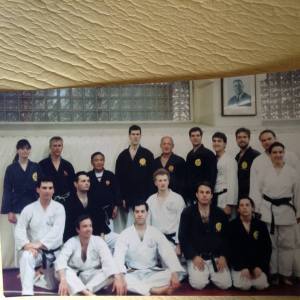

Very nice article on KIMO Sensei, Fred. Thanks.
LikeLike
Memories from the early 1970’s when I trained under Kimo Sensei in Puerto Rico. I was in the first class which he started at an outdoor basketball court and later we move into the dojo. I can see he have not change much. Thanks for sharing his history.
Regards,
Ramon
LikeLike
Ramon, happy to hear from a student from the “old days”! Thank you for your message.
LikeLike
Hi Everyone of Goju-Ryu ;
We are part of Kimo students Dojo in Puerto Rico.
Let us know we’re he is and that to write to us.We will be very happy to know how he is doing.
My personal e-mail:
Rodrig.jorge53@gmail.com
Jorge, Sensei
LikeLike
Hello Jorge, nice to hear from you. I will be in touch with sensei’s contact information.
LikeLike
Pingback: Saying Goodbye | Kodokan Boston
Hello,
I am currently a student of Yamashita Shorin-Ryu in San Antonio and early on a student of Shōrinjiryū with Roy Osborne associated with James Coffman.
I have been looking for more information on the Hakutsuru Kata from the White Crane.
I would like to know if Sensei Kimo Wall has made any DVD available of the Hakutsuru Kata 1 that is shown on YouTube.
If so please let me know how to obtain a copy or any more information on that subject.
You can contact me by email at;
gperi0351@gmail.com
Thank You and
God Bless,
Greg Peri
LikeLike
Hello Greg,
Thank you for your message. I am not exactly sure which Hakutsuru kata you are referring to (Hakutsuru means White Crane, if you did not know). There are, I believe, two kata on the net that may use that term. One is Hakutsuru no mai. (Dance of the White Crane) It is the 10th in the series of kata that Toguchi Seikichi created for his Shoreikan in the 1950s. I believe there is a video of Kimo sensei doing it at the Shurei no mon up. The other is the version of Hakakku ichi Kimo sensei taught. That kata is from the Gokenki lineage Hakkaku kempo that was passed on by Matayoshi Shinpo. Slightly different versions of it are taught by many of Matayoshi sensei’s senior students. I believe there is a compilation video of him doing it or parts of it up. Kimo sensei did not make any videos of his kata for public consumption. I think if you are interested in learning any of it you would have to find a teacher who knows it.
Information-wise, there are a few things about Gokenki around the net. There is also a little more about the Gokenki lineage forms I wrote
here: https://kodokanboston.org/2018/10/31/some-thoughts-on-gokenki-and-the-transmission-of-his-crane-on-okinawa/
here: https://kodokanboston.org/2020/05/20/crane-stance-no-can-defend/
and here: https://kodokanboston.files.wordpress.com/2014/02/kingairyuarticle.pdf
I hope that helps.
cheers,
Fred
LikeLike